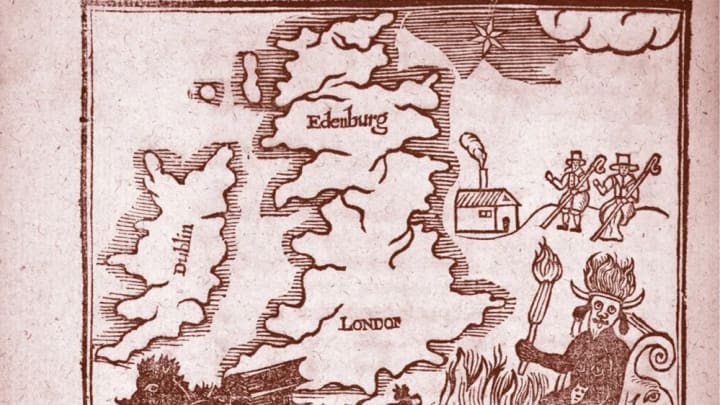9 Strange and Surprising Woodcuts From Early Printing
By Bess Lovejoy

Witches, demons, and wondrous creatures appear in a new book from the British Library,Graven Images: The Art of the Woodcut.
Whether printed in early books, pasted on public walls, or hawked on street corners, woodcuts were some of the earliest forms of mass communication. They appeared in Europe around 1400 (having been used in Japan and China far earlier), where they were used to spread religious imagery, political propaganda, important news, and salacious gossip. A new book from the British Library, Graven Images: The Art of the Woodcut, collects some of the strangest and most amusing woodcuts in the library's collection, featuring astounding images of wondrous events, terrible crimes, and exotic creatures both real and imagined. The text, by London writer and editor Jon Crabb, provides an insightful guide to the turbulence depicted on the pages, whether it's the political upheaval of Henry VIII's break from the pope in 1534 or the "witch craze" of the 16th and 17th centuries.
The Joviall Crew, or, the Devill turn’d Ranter: being a character of the roaring Ranters of these times, represented in a comedie (1651)
One of the bizarre beasts of land and sea collected by Ambroise Paré.
Weighting the old, devilish snakes with the Divine Word, 1525, fromBeschwerung der alten, Teüfelischen Schlangen mit dem Götlichen wort.
A bizarre apparition from Beschwerung der alten, Teüfelischen Schlangen mit dem Götlichen wort.
A declaration of a strange and wonderfull monster born in Kirkham parish in Lancashire (1646).
Representations of the "Roundheads" (Parliamentarians) and other types of heads in the English Civil War.
A true relation of the trauels of M. Bush, a gentleman: who with his owne handes without any other mans helpe made a Pynace, in which hee past by ayre, land, and water: From Lamborne, a place in Barkshire to the Custome-house Key in
London (1608). This woodcut depicts how the now-forgotten William Bush ran cables between buildings,
on which to "fly" a small boat. His prank caused a sensation.
The complaint of M. Tenter-hooke the Proiector, and Sir Thomas Dodger the Patentee 1641. A strange satire having to do with the fact that patent on certain goods had recently ended.
The godly end, and wofull lamentation of one Iohn Stevens, a youth, that was hang’d, drawne, and quartered for high-treason, at Salisbury in Wilshire, vpon Thursday being the seuenth day of March last 1632. With the setting vp of his quarters on the city
gates (1633).